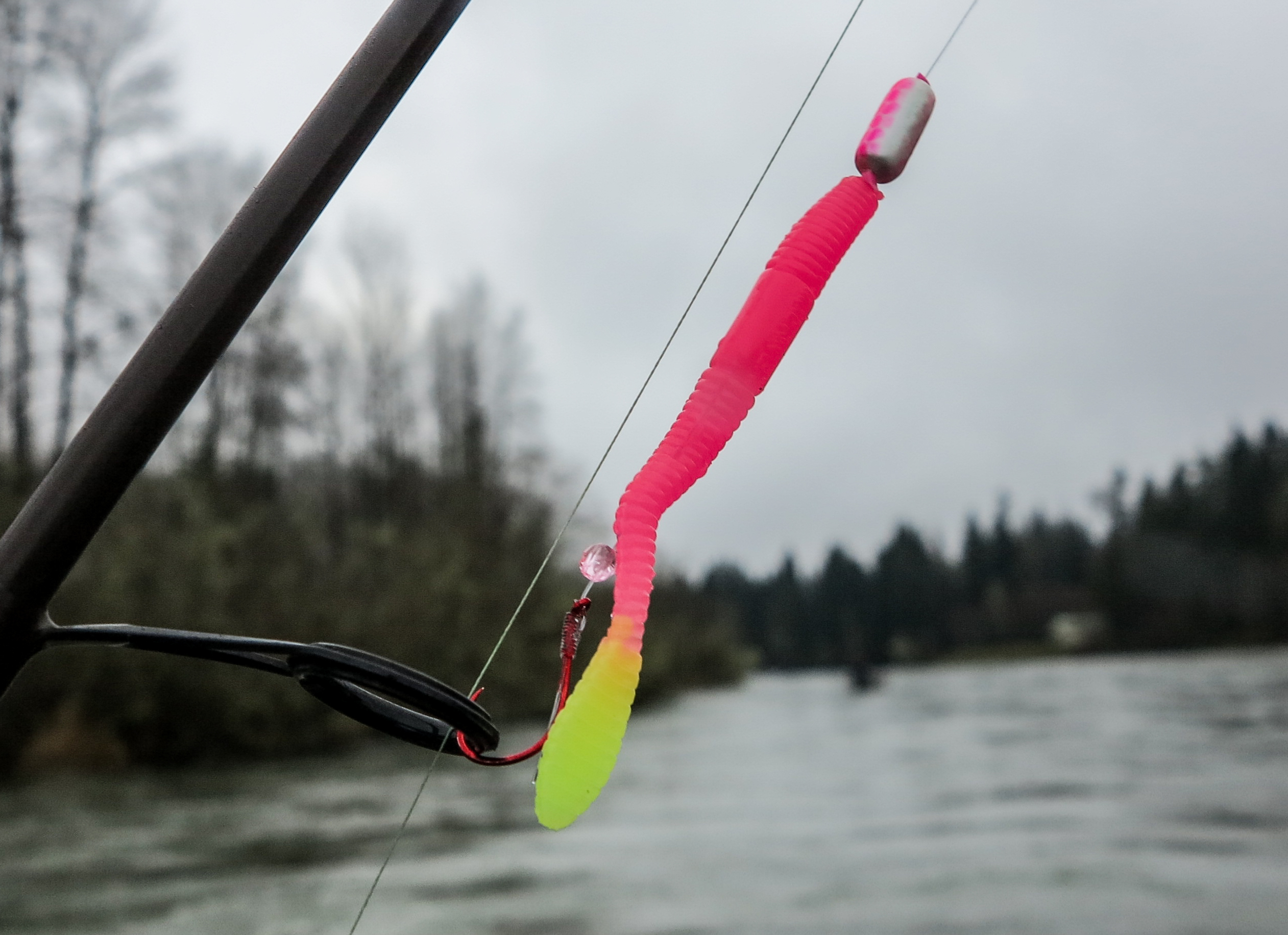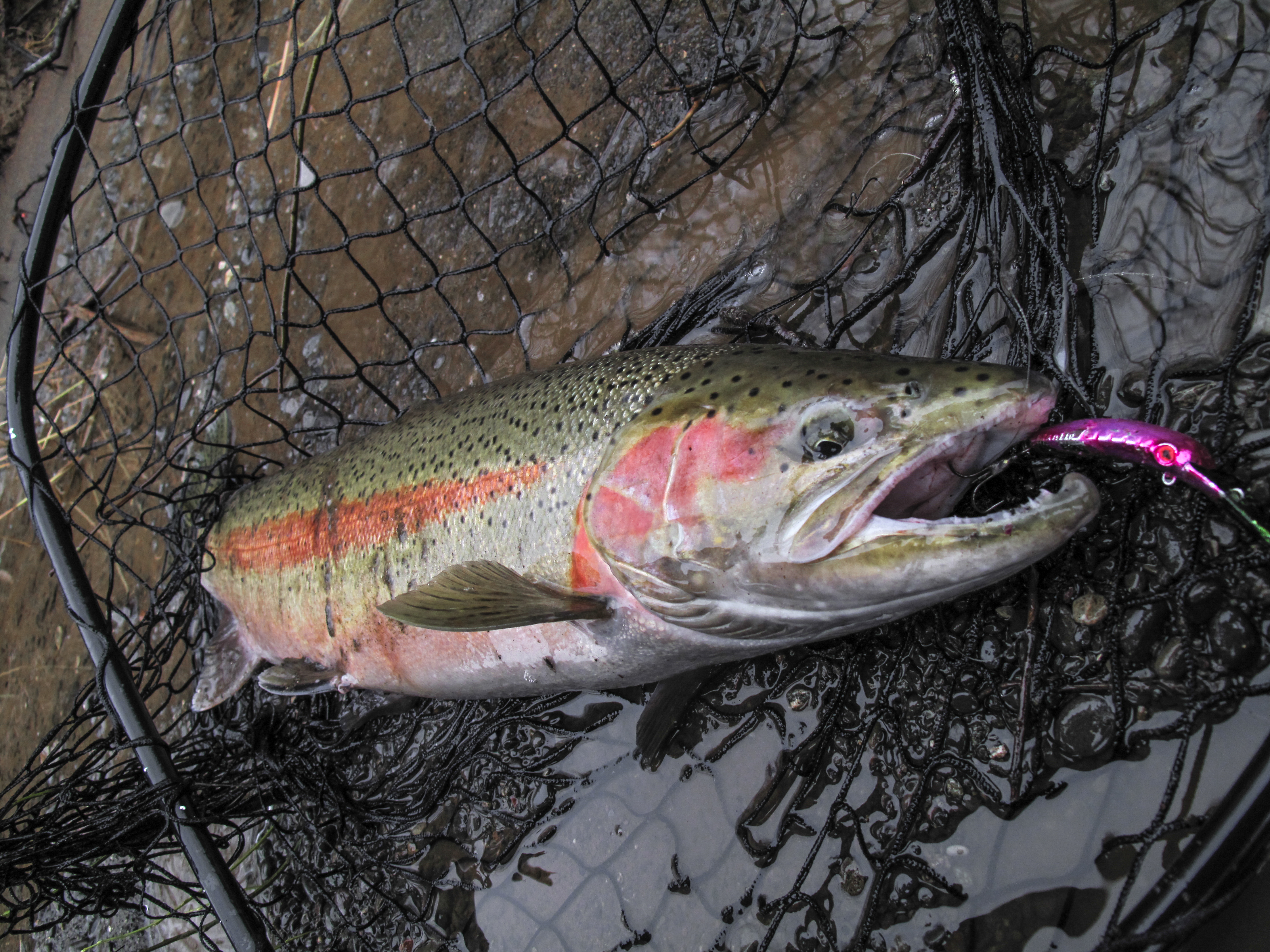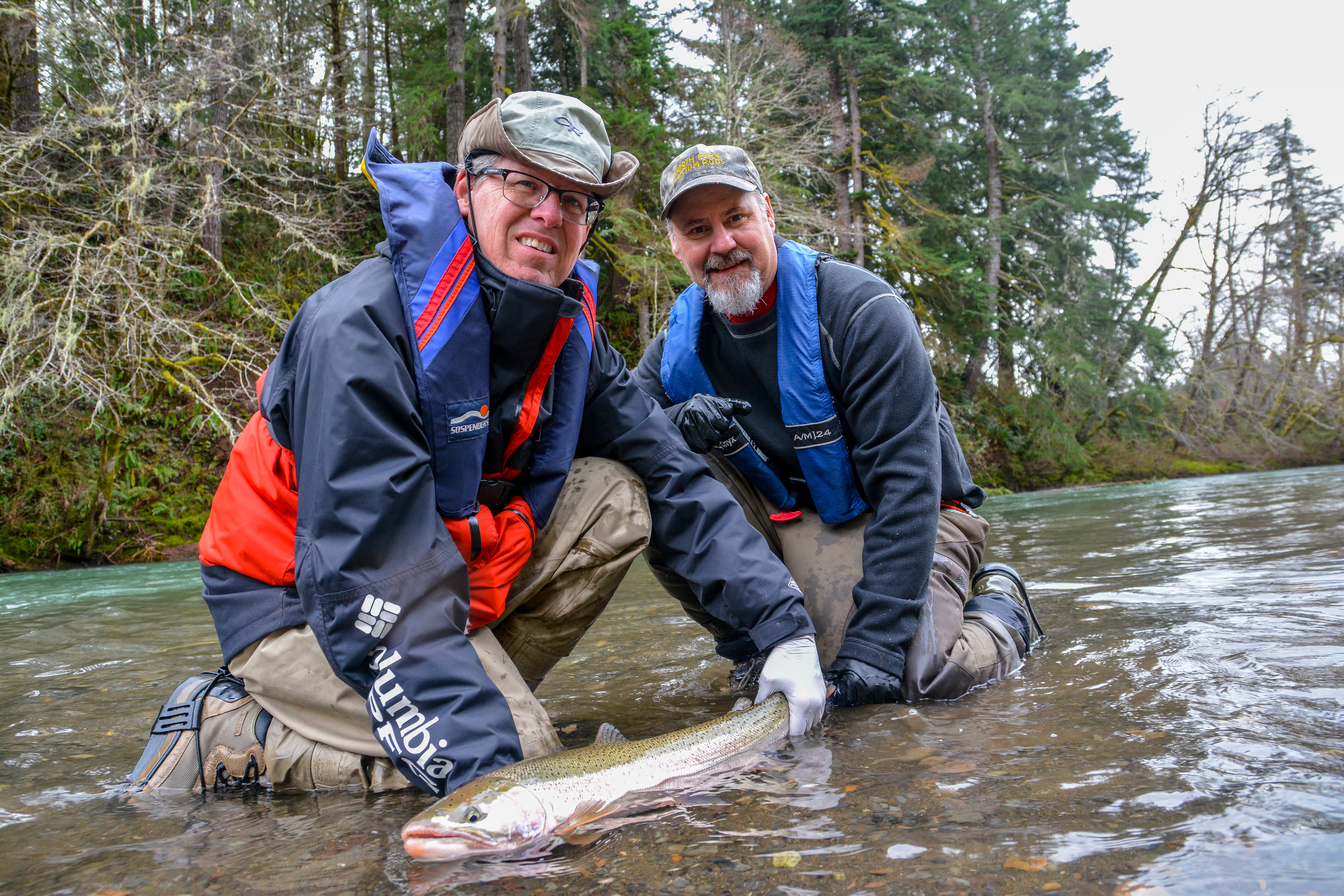Search
Latest Articles
Last Chance March Steelhead
by Jason Brooks, March 09, 2019
The first thing a March steelheader needs to remember is that the river’s “fresh” fish and even most of the kelts heading back downriver could be wild so bait should be left at home. The fish are still aggressive to feed and bait can contribute to a high mortality. Luckily there are a few artificial baits that work just as well-if not better than real bait-and can be rigged to reduce the swallowing of a hook.
The “pink worm” is probably the most common of the artificial “baits” to be used and they are very effective. Resembling a washed out night crawler drifting down a river after being flushed by a recent rain the pink worm is irresistible to steelhead looking for a quick meal. With many options on how to rig the worm and even how to fish them you can go to the river with a small tackle container and a long drift rod and walk the banks of your favorite steelhead river and know that you have a good chance of hooking a fish. Drift fishing them is one of the best ways to fish the pink worm and is simple. The standard slinky in various size shot depending on water conditions and a shorter leader from 18 to 24-inches with a pre-rigged pink worm is all that is needed. To keep the worm from tearing try using a small bead as a bumper at the eye of the hook. Then thread the worm and place the hook coming out about 2/3 of the way down. A floater, cheater, corky or pill float can add contrast and floatation when it is placed in-front of the worm. The fish will grab the lure and with the hook placement lower in the rubber worm it will catch the corner of the mouth and reduce any chance of a deep hook in the throat.
Another way to fish a pink worm is to rig it under a float. The first rigging technique is the “whacky” rigging where you place the hook in the middle of the worm and add a few split shot on the leader to get it to sink below the bobber. Another way is to use a 3 or 4-inch rubber worm on a jig head and fish it just as you would a jig. One option is to use your pre-tied leaders with worms rigged for drift fishing but instead of using a float such as a cheater, corky, or pill float is to use a painted sliding sinker. This gets the worm down and allows you do “drift” it along using a float to keep it off of the bottom. For those in a boat that are boondogging this is a great way to fish a pink worm without worry of it getting hung up on the bottom. It is not truly bobberdogging but more like drift fishing and floating a jig combined.
Besides the pink worm other non-bait options are fishing beads as well as yarnies. Both can be fished with a small rubber bobber stop to keep the bead or yarnie a couple of inches from the Gamakatsu Wide Gap hook. These hooks are super sharp and perfect for this application of fishing because when the steelhead grabs the bead or yarnie the hook digs into the side of the jaw of the fish, again reducing mortality. Pulling plugs is hard to beat on a sunny Spring day and since the river has less anglers on it than during the height of the winter steelhead season you can often fish several holes, seams, runs, and tailouts and not worry about another boat coming by and beating you to the fish. Plugs also often get grabbed from the rear and the hook is stuck in the top of the mouth which makes it easy to fight the fish to the boat and a quick release since the hook can be removed with ease while by grasping it with a pair of pliers and the fish never needs to be touched by the angler.
Fish handling is critical this time of year. As the water temperatures will be a bit warmer than in February but the turbidity is also often slower and less silt which is good for the fish recovery. The downfall is that these fish are tired with most post-spawn. Be sure to use heavy enough gear to get the fish in quickly and then take the time to revive the fish. Wet your hands first and try not to grip the body of the fish. The internal organs of a steelhead can easily be bruised or compressed if you grip them too tight or even try and lift a heavy fish. Remember that the heart is right behind the pectoral fins and low in the cavity. You can actually compress the heart while trying to revive the fish if you are putting pressure under the belly. Instead, use a landing cradle if possible or a knotless net and grab the fish by the tail. Do not use cotton or wool gloves as this will remove the protecting slime from the fish. Latex gloves are good as they tend to not be rough and will help in keeping the slime on the fish instead of your hands. To release the fish face it into the current and move the fish back and forth as this will allow water to flush over the gills and revive the steelhead. To test the fish, loosen your grip and if the fish powers away it is fine. If it just sits there, then keep moving the fish in the slow current. This can take several minutes and there is no rush to let the fish go as long as you are keeping it in the water and having water move through the gills. This is true of all fish we plan on releasing. Often times I see anglers quickly “throw” the fish into the water trying to get the water to forcefully go into the gills and thinking this is helping the fish. Instead what you are doing is thrusting a tired fish into a current and it can’t recover in time before it is pinned to the bottom of the river by the current where it will die. Be responsible and take the time to properly release the fish.
When it comes to fishing for steelhead in March a little research needs to be done on where to go. Be sure to check the regulations carefully and that the river you are planning on fishing is open. One of my favorite rivers flows through different federal and state lands and the fishing season is actually “split” with part of the river closing on one date and the other part closing on another date. Some of the more popular rivers closed at the end of February, some will close mid-March, some at the end of the month and a very rare few that stay open into April and later.
Weather can be a factor in March with frequent rain showers and wind storms. If you plan on fishing a river from a boat be aware that trees often come down in spring when the ground is saturated as well as high winds occur and the leaves are starting to form. Scout the river as best as you can and be ready to navigate them safely. Calling a shuttle service is one of the best ways to get a river conditions report as well as a fishing report. The water is often clearing up since snow runoff and even the rains have already washed mud and loose soil into the river earlier in the winter. By the end of March, you can get some really warm days and even a sunburn so be sure to take sunscreen and sunglasses.
The last chance steelhead season of March also means that most hatchery fish have already spawned and are returning to the ocean. Sometimes I don’t keep hatchery steelhead in March unless it is mortally hooked as the fat content is less and besides I would rather release that fish and hope to catch it next year when it returns as a three or four salt fish. All wild fish must be released and it is imperative to keep them in the water and well rested before releasing since they too are often “spent” fish and heading back to the ocean. March is my last chance to get out and catch some amazing fish during some of the most comfortable “winter” steelhead fishing days.
Jason Brooks hails from North-Central Washington. The son of a fishing guide, Jason is an avid hunter, angler, outdoor photographer and published writer. He resides in Puyallup with his wife and two boys.


